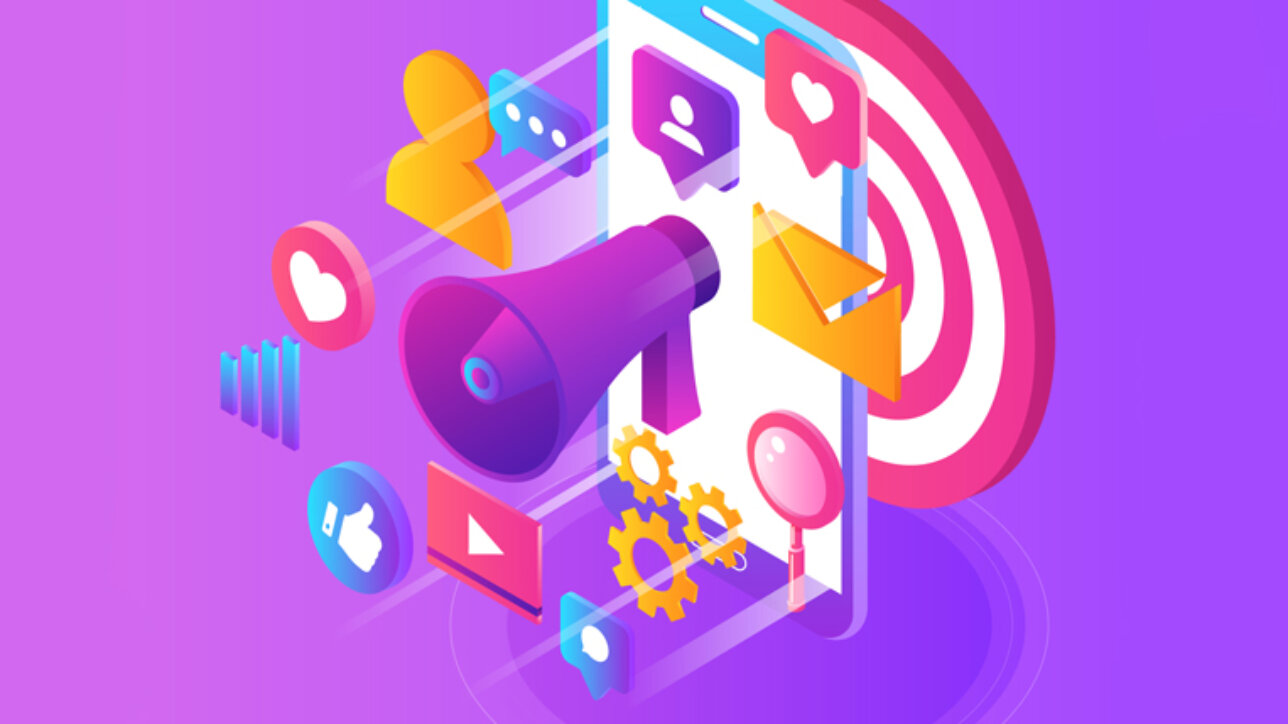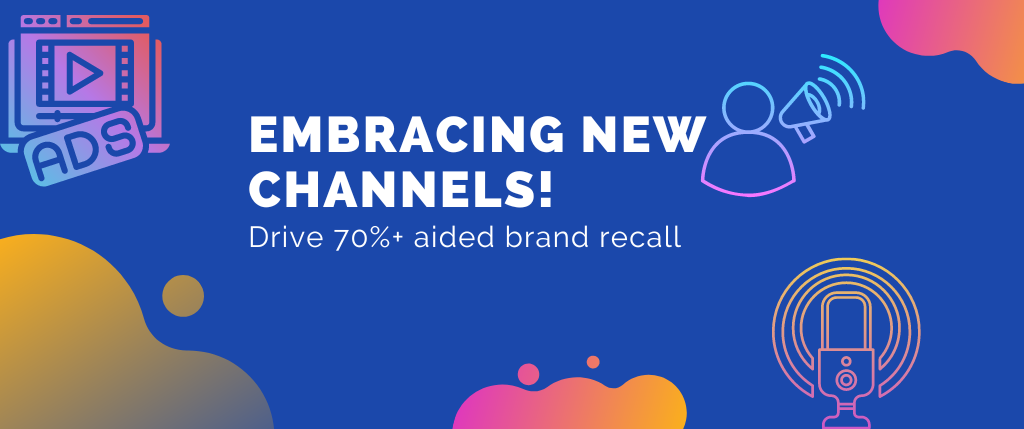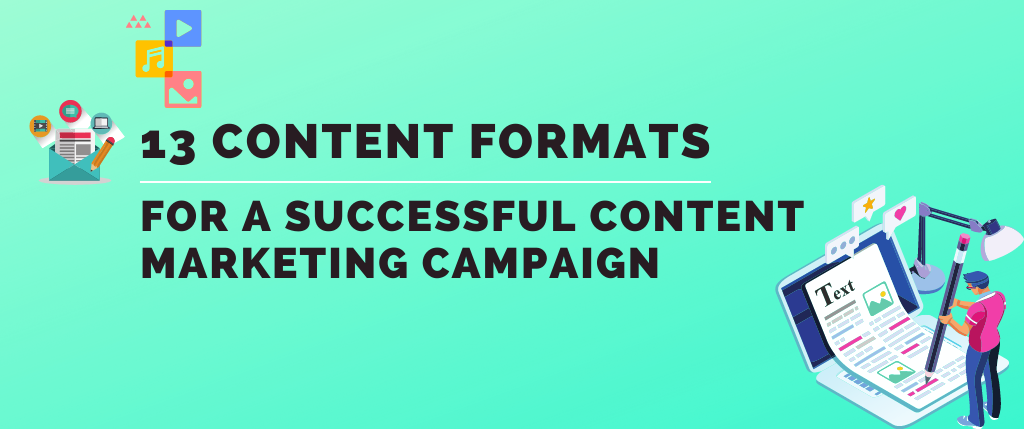In Seth Godin’s words, “Content Marketing is the only marketing left” reveals the high importance of content marketing! The reason being, – it is authentic, useful, and perfectly suited for the internet generation.
Content Marketing offers ample opportunities for businesses to boost their results. As you deliver relevant and valuable content, it improves your online reputation, builds a community, and grows advocates of your brand.
Content is at the center of the connection between the brand and the customer. Good Content will open their minds and hearts to pay attention and care that your brand exists.
If you can connect with your audience more authentically and humanly, and leverage content to deepen relationships than only sell, your results will exponentially increase.
- STRATEGIC PLAN- Before you go ahead to execute anything, a strategic plan is essential!
- Determine your audience – The key to success in Content Marketing is to find your audience and draw them in with your content pieces. To do this, you have to understand their lifestyle, concerns, problems, and needs.
Audience ≠ Buyers
Audiences include people who interact with your brand before they make the decision to purchase. They may or may not be converted into buyers.
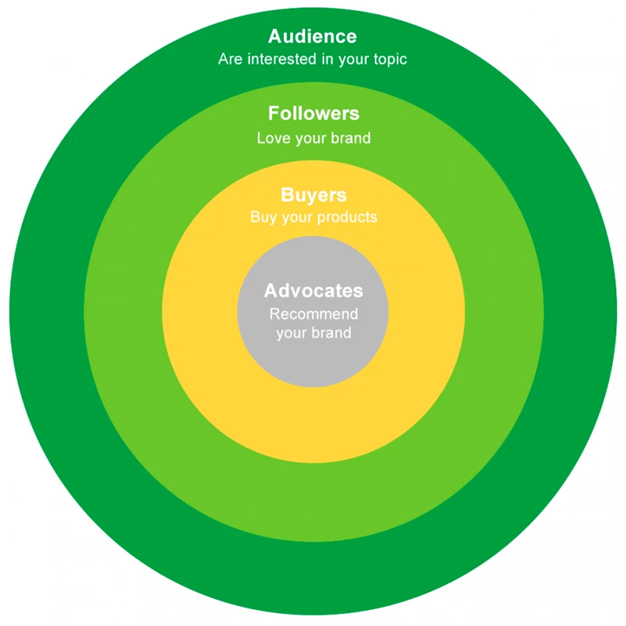
Source: https://www.semrush.com
Develop an editorial plan
Planning your Content allows you to allocate your resources appropriately, and to see which workflows are taking longer than expected, and adjust your expectations accordingly.
To ease your work, you can use an editorial calendar to organize your work. These apps also allow you to share it amongst a group of members and will allow you to monitor the progress as they create, publish, and analyze Content.
e.g., Trello –
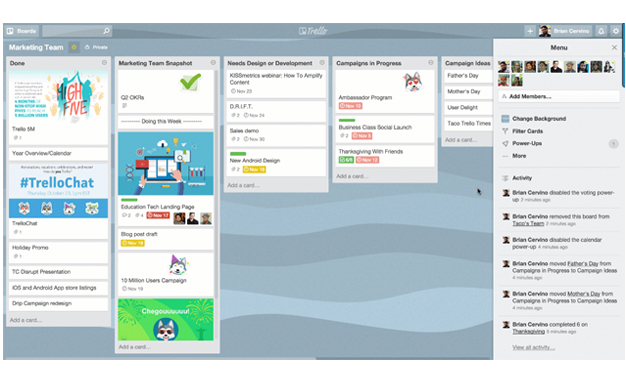
You can add tasks, assign them to specific people, and set deadlines — all while collaborating with unlimited team members. This tool will help you cut down on the amount of back-and-forth email communication you receive about projects while keeping everyone involved via a notification system.
Plan content production
Before you start the content creation process, think about the purpose of each piece you want to create. Make sure your Content covers the customer journey to support your prospects at each stage, and, ultimately, develop a long-term relationship between your client and your brand.
Content varies across all 5 stages of the Customer Journey:
Awareness: At this stage, the material provides information, education, or entertainment around the periphery of the main topic. It’s a highly engaging or snackable form of content.
e.g., Reports, eBooks, Listicles, “What is….”
Consideration: People in the consideration stage are contemplating a solution or service. They are aware of its presence and now want to be convinced that this will help them in their journey. We do so by showcasing how others in a similar position were served by the said solution/service.
e.g., Expert Guides, Live Interactions, Podcast, Comparisons
Decision: These pieces are designed to help potential leads determine why you are the best choice to help them. Case studies, client reviews, and specific analysis of the work you have done in the past can be helpful at this stage, as users compare you directly with other providers.
e.g., Testimonials, Reviews, Demo, Product Specs
Retention – Bring to the forefront the various ways to get the most out of your product or service, as well as ways to solve common issues and new features. Anticipating the questions, they will ask, and addressing them preemptively can also keep prospects from growing frustrated with your offerings.
Advocacy Inducing – These are pieces that highlight the parts of your brand that will transform customers into evangelists; this might include pieces that spotlight your corporate values, efforts to give back, or outstanding team members.
e.g., Freebies, Case Studies, Brand Film, Project Film (including testimonials)
Relevant SEO-friendly Content
Around 78% of the consumers say that personally, relevant Content determines their purchasing decision.
Your Content needs to be original and relevant. It’s pretty simple. Create your own Content. Use your own ideas. If you’re short on ideas, hire a consultant, writer, or agency to help you create them.
Consumers and decision-makers seek real Content that can help them solve their problems quickly and easily. They want you to earn their trust.
One of the ways to develop and deliver personalized Content is to engage them in a discussion about their recent experiences with your brand. This is also called as user-generated Content. You can display reviews, comments, and photos of the same.
Another fun fact- 35% of the traffic is generated by organic search; hence, it is incredibly essential for you to create articles that are optimized for organic search.
Create Niche Content
When you create niche content, it targets a particular subset of consumers.
In 2019, with more Content than ever before in the market, you really have to stand out in your content marketing to be noticed. This means that you either have to create extremely creative or detailed Content that stands out. Narrow your focus and create Content for a smaller niche.
Instead of competing with other content marketers over the same audience, shift towards niche content.
e.g., You write about “digital marketing campaigns for female entrepreneurs” instead of just “digital marketing campaigns.”
Team input in the development of Content
At first, you might be startled and state it as an absurd thought. You may think, “what do other team members know about creating content?” Well, there is a very logical reason behind it!
Each of your team members engages with the brand’s customers in different ways. They will be able to provide you with varied perspectives about their needs and expectations in terms of the Content they need. They also have a unique understanding of the brand and have different ideas on how to communicate better.
{{cta(‘2cb1f2a4-d56e-4a62-b159-f700d4b67b91’)}}
Build a more targeted landing page
As you create more high quality and relevant landing pages, your search traffic is bound to boost!
You should develop as many landing pages as possible of one or more keywords that your audience is likely to search for.
e.g., Nuffield Health was able to generate 60% more revenue just by creating more relevant landing pages and optimizing those for the right keywords.
If it is a descriptive blog, linking the statistics to the primary source would gain greater trust and increase reliability. You can also tie some of the jargon or new concepts to your old blogs, which would even now be viewed by the viewers who wouldn’t scroll for older blogs.
Collaborate with brands
You can create different Content of all different varieties by collaborating with different brands. You will be amazed by the results!
e.g., Uber collaborated with Pandora and Spotify to create a personalized content of customers’ ride with your favorite music.
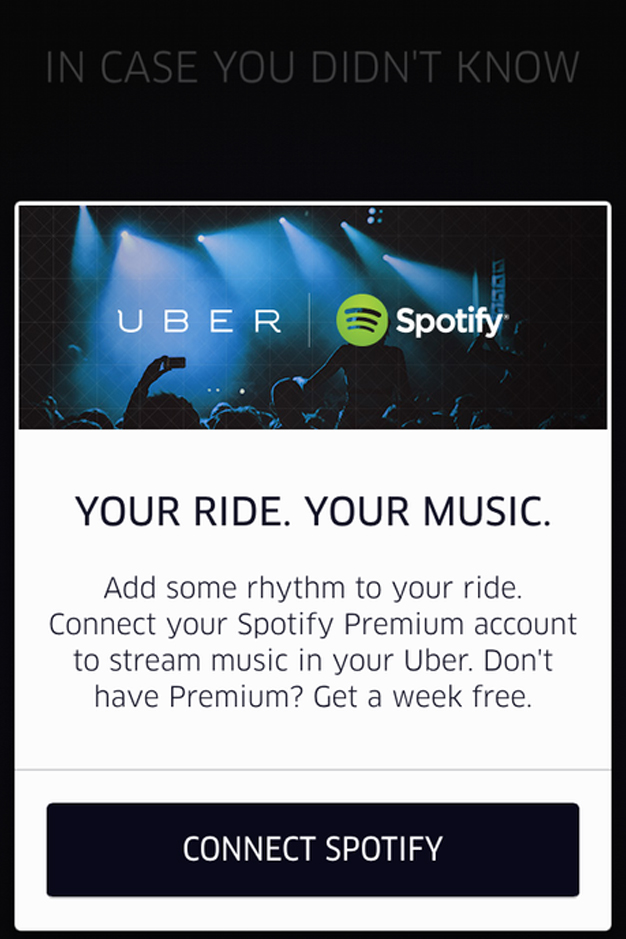
Other collaborations include:
- Podcast interviews (in which hosts of different shows interview one another on their respective channels)
- Collaborative research or case studies
- Social media, “takeovers.”
A few things to keep in mind as you partner with other brands is that you collaborate with a brand that is related to your service and not your competitor.
Remember: the goal isn’t merely to cross-promote your brands. It’s to provide value to your end-users as you possibly can through the creation of supplemental Content that allows them to get the most out of your brand.
Micro-moments
In this fast life, consumers are often in a quick search for an answer to an immediate question.
Google has categorized these “micro-moments” as:
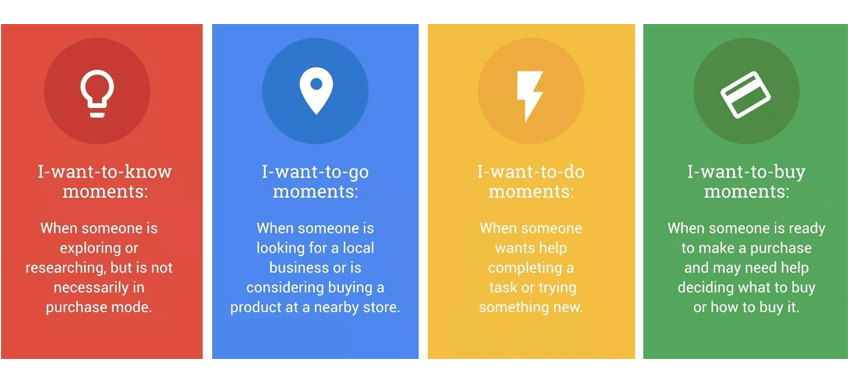
There are two main facets to develop Content that capitalizes on micro-moments.
The first, of course, is to create Content that is plain and simple, answers your audience’s question(s). While there certainly is time and place for long-form content that dives deep into the nuances of a given topic, that doesn’t mean that all of your Content needs to be so thorough. In other words, don’t neglect the importance of developing Content, such as:
- FAQ pages
- Instagram and Facebook stories
- Audio material to be played as a flash briefing
Secondly, you need to make this Content available in the most efficient format possible and to deliver it via the most logical channel.
e.g., you wouldn’t create a five-minute video explaining various payment methods your company accepts. Such information would obviously be better suited for an on-site FAQ page.
With micro-moments, you can give your audience exactly what they’re looking for so that they’re able to engage in a deeper level with your brand. The intention is to provide content in an easy to understand manner to help the prospect mature in their journey.
Content Cluster
As we looked above the importance of micro-content, it doesn’t mean that we forget to create long-form content altogether.
Long-form of Content (above 1000 words) feeds more passionate followers, who are likely to become your brand loyalists. It’s simple: the more interested an individual is in your Content, the more they would want to learn about it. (Just like this one!)
In fact, Google’s more recent algorithms tend to recognize longer-form of Content as more valuable and rank them higher in search results. – Bonus!
Additionally, Google’s algorithms now place higher importance on topic clusters, meaning multiple pieces of long-form, valuable, and qualitative Content revolving around a single topic. As you create content clusters, you prove to Google that you’re not fooling them by creating one or two pieces of keyword-stuffed Content. You’re actually dedicated to provide your audience with highly-valuable information regarding a specific topic.
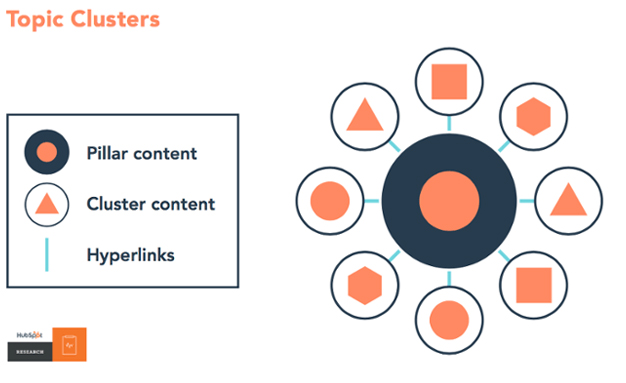
source : https://research.hubspot.com
So basically, your pillar content is the “umbrella” that holds and connects to other cluster content via hyperlinks. These cluster contents will cover the hook and nook of the sub-topic, and your pillar content will consist of a broad overview of the main topic.
This will make your website the “go-to resource” in your industry, and Google algorithms, too, will appreciate it. It is a win-win situation!
Micro-influencers
We all are aware of the buzz of Influencer Marketing. This does not mean you have to find someone famous and ask them to post about you on their own platform. How about you partner with them and co-create Content? You can also ask them to post Content on your platforms that you can then leverage and promote as evergreen content that lasts years, not minutes.
When an influencer creates Content on your own channel certainly adds some credibility to your brand in the eyes of your followers. Secondly, the influencer is likely to share it with their tribe. Thereby increasing your brand message.
Document, don’t create!
It is essential to make a note that ‘Document’ does not mean ‘not to create’ Content. It just means to create a version that is predicated more on practicality instead of having to think of stories or fantasy—something that is more challenging and consumes more time.
One of the errors committed by content creators is that they often try to ‘oversell’ their brand, as they think that’s what grabs the audience’s attention. Whether you’re a business coach or a motivational speaker or an artist, I think it’s much more fruitful to talk about your “process” than about the actual advice you think you should give them.
Diversify your Content
Include a diverse mix of content types in your plan to appeal to every member of your audience. Your customers are likely to get bored after a certain point with only-text Content.
Fun fact- Video content that is around 2 minutes long have the highest levels of engagement.
While consumption of audio content isn’t nearly as massive, podcasts are certainly growing as a trend over the past few years.
It is also necessary to know that not all people exist on the platform you publish your Content. No matter how great your Content maybe, if it is a handful of people who view it, it’s a waste! Hence, content distribution is critical as people who prefer any of the media the most, will not escape your Content! In other words, your content needs to be displayed omnichannel.
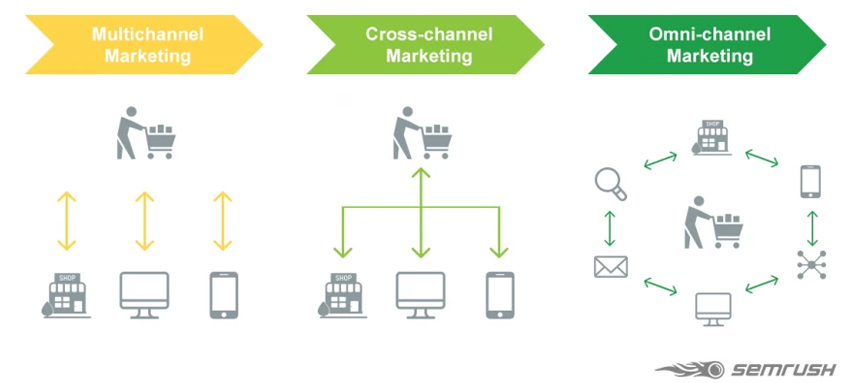
Source: https://www.semrush.com
Content distribution channels include owned media channels, like your company’s website, emails, newsletters, blogs, and yes, social media pages. You can also pay to get your Content distributed, using social media ads and Google Ads campaigns, or have your Content distributed by third parties like PR pieces and guest blog posts.
Live video via platforms such as Instagram and Facebook is another prime way to create interactive Content that can mostly be personalized on-the-fly.
The use of webinars is also on the rise! The term “webinar” comes from the words “web” and “seminar”; and as the name suggests, it means a seminar conducted online. In other words, it is an online meeting or presentation that is held in real-time. Attendees join the webinar by connecting remotely via the internet.
Sometimes you’ll undoubtedly want to use such platforms to create scripted broadcasts in which your audience isn’t meant to participate; you also could use them to put on Q&A sessions, create interactive how-to videos, and so on.
Why stay restricted when the number of media flourishes every day?
